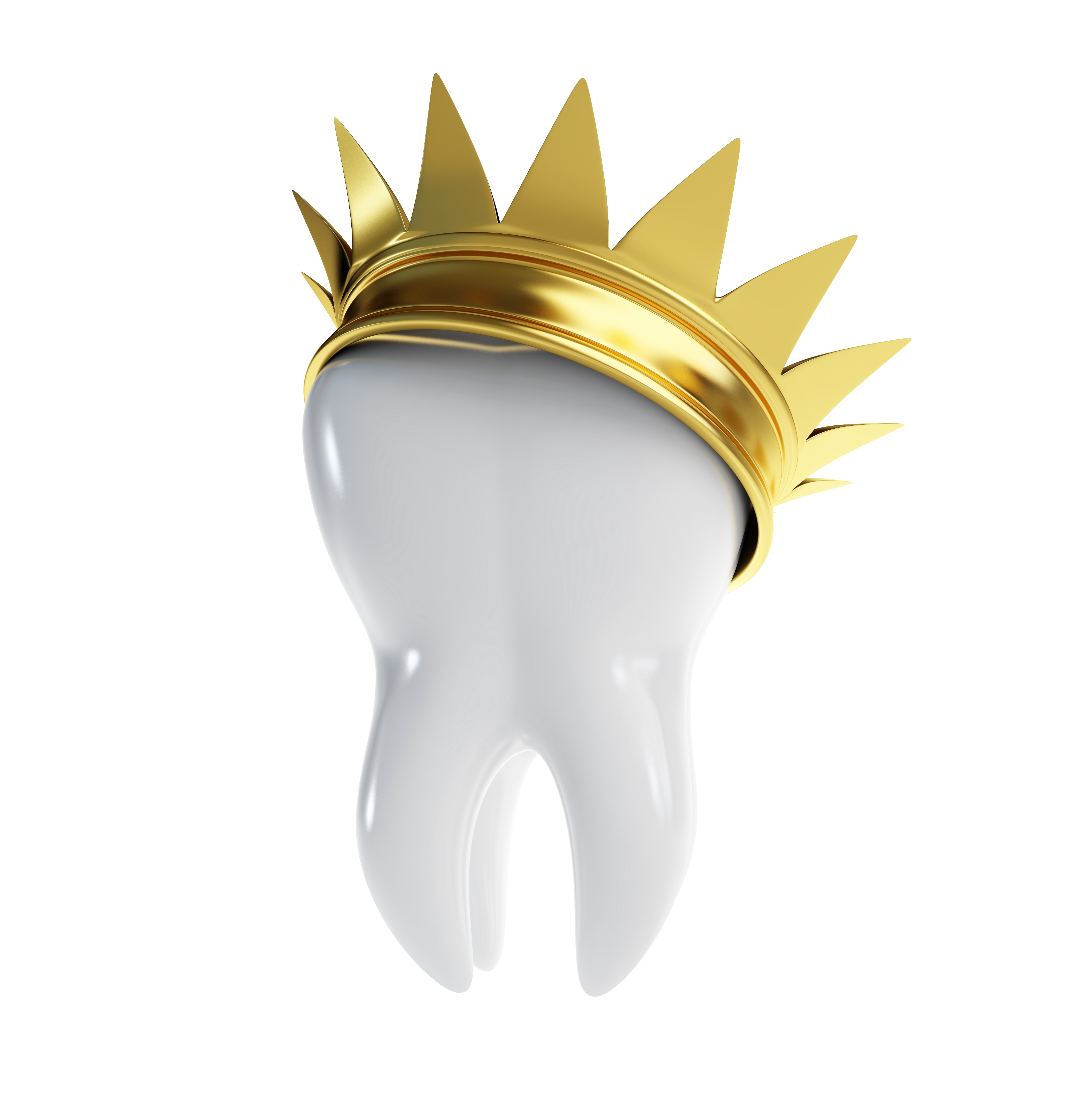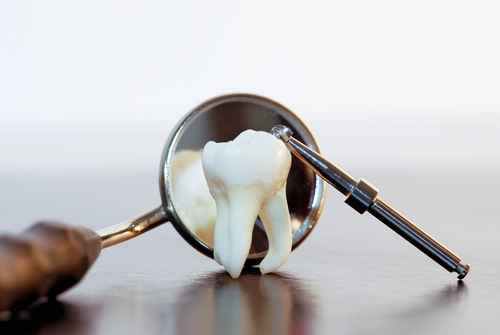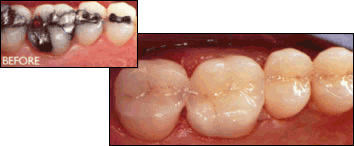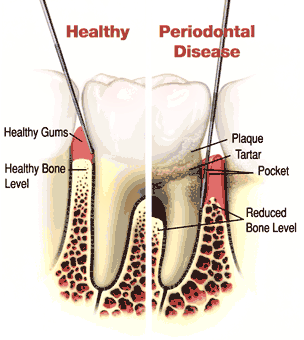Premier Walk-in Dental Blog
Restore Your Smile with Walk-In Crowns
November 13, 2013
 There are many reasons for why a patient might need a crown. In some cases, it’s because a tooth is severely decayed. In others, the tooth may be damaged or cracked. Whatever the case, a crown can return structure and functionality to a damaged tooth, preserving oral health and preventing the need for more extensive care, like a tooth extraction.
There are many reasons for why a patient might need a crown. In some cases, it’s because a tooth is severely decayed. In others, the tooth may be damaged or cracked. Whatever the case, a crown can return structure and functionality to a damaged tooth, preserving oral health and preventing the need for more extensive care, like a tooth extraction.
Crowns work by completely covering the tooth that needs to be treated. They can be made of variety of materials, including metal, but a porcelain crown mimics the look of a natural tooth better than other kinds.
At Premier Walk-In Dental, Dr. Jeff Nichols can help you restore your smile in just a couple of visits, no appointment needed. On your initial appointment, our Rockledge team will modify your tooth and make an impression of it. Then we’ll cap it with a temporary crown. Our lab will use the impression we’ve made to create a customized crown that will permanently replace the temporary one we’ve given you. When it’s ready, you’ll come back to our Rockledge office to it put in place of the temporary crown we gave you last time, putting the finishing touches on your crown restoration.
Call or visit Premier Walk-In Dental if you need help with a crown. We offer crown restorations to patients from Cocoa, Satellite Beach, Merritt Island, Viera, Suntree, Melbourne, and Palm Bay, Florida.
Root Canal Therapy for Rockledge Patients
October 13, 2013
 When a patient experiences pain or sensitivity in a tooth because of an infection or an injury, a root canal may be needed to relieve symptoms and restore oral health. During a root canal, Dr. Jeff Nichols of Premier Walk-In Dental will remove the infected tissue from inside your tooth, then fill it with a safe substance and cap it with a crown. Not only will this relieve painful symptoms, it will also prevent the need for a tooth extraction.
When a patient experiences pain or sensitivity in a tooth because of an infection or an injury, a root canal may be needed to relieve symptoms and restore oral health. During a root canal, Dr. Jeff Nichols of Premier Walk-In Dental will remove the infected tissue from inside your tooth, then fill it with a safe substance and cap it with a crown. Not only will this relieve painful symptoms, it will also prevent the need for a tooth extraction.
Even though your tooth may no longer have a nerve at its center, the structural integrity of your smile is preserved. However, when a tooth is removed, so is the root that anchored it to your jaw. With that root missing, the jaw will begin to weaken and nearby teeth may shift out of place to make up for the gap your smile now has. Over time, other teeth may be lost as a result. With a root canal, the goal is to treat the symptoms of infection and prevent these kinds of changes from happening in the future.
How do you know if you need a root canal? Consider these symptoms:
- Sensitivity to hot or cold foods and beverages
- Pain when biting down
- Sensitivity to pressure
- Difficulty sleeping because of tooth pain
- A pimple-like sore on the gum
- Pain in other areas of your mouth, head, or neck
- Facial swelling
To receive treatment for an infected or injured tooth, call or visit Premier Walk-In Dental. We offer root canal therapy to patients from Cocoa, Satellite Beach, Merritt Island, Viera, Suntree, Melbourne, and Palm Bay, Florida.
Tooth Extractions for Rockledge and Beyond
September 13, 2013

In our last post, we talked about cavities and the service Dr. Jeff Nichols offers to treat them—tooth-colored fillings. But sometimes a tooth is too decayed or damaged to be treated. In those cases, what you might need is a tooth extraction.
With a walk-in tooth extraction from Premier Walk-In Dental, we can relieve you of the painful symptoms of an abscess or infection, or remove a severely damaged or decayed tooth and replace it with a crown.
As intimidating as a tooth extraction might sound, many extractions are simple. Thanks to local anesthetic and Dr. Nichols’ years of experience, you can look forward to a comfortable and quick procedure that gives you the important help you need.
Another case in which a tooth extraction might be necessary is wisdom tooth removal. It’s advisable that patients have their wisdom teeth removed to prevent pain, impaction, misalignment, and infection.
Caring for Your Smile after an Extraction
Following your walk-in tooth extraction, it’s important to keep these tips in mind:
- Change gauze regularly for the first 24 hours following your visit
- Elevate your head to stop bleeding
- Apply an ice pack for the first 24 hours to lessen swelling
- Avoid sucking on a straw or smoking cigarette for a few days
- Don’t rinse your mouth for the first 24 hours
Do you need help with a tooth-extraction? Call or visit Premier Walk-In Dental in Rockledge today. We serve patients from Cocoa, Satellite Beach, Merritt Island, Viera, Suntree, Melbourne, and Palm Bay, Florida.
Treating Cavities with Tooth-Colored Fillings
August 13, 2013
 At some point, nearly everyone will get a cavity. When that happens, we hope you’ll turn to Dr. Jeff Nichols and his team at Premier Walk-In Dental for help. At our Rockledge dental office, we offer tooth-colored fillings to help patients treat decay discreetly.
At some point, nearly everyone will get a cavity. When that happens, we hope you’ll turn to Dr. Jeff Nichols and his team at Premier Walk-In Dental for help. At our Rockledge dental office, we offer tooth-colored fillings to help patients treat decay discreetly.
For many years, amalgam fillings were the treatment of choice by dentists. But today, dentist like Dr. Jeff Nichols are more likely to offer tooth-colored fillings, in part because of how well they blend in with the color of teeth.
However, there are other reasons that dentist are offering tooth-colored fillings over amalgam fillings. First, amalgam fillings are made of metal, which expands and contracts, causing cracks or leaks and putting the patient at risk of bacterial reinvasion. Second, amalgam fillings often contain a small amount of mercury—not enough to be harmful, but it’s there nonetheless.
Tooth-colored fillings, by comparison, don’t contain mercury and, in fact, aren’t made of metal at all. That also means they won’t expand or contract. As a result, they’re more supportive of the tooth’s natural structure, which means you get to keep more of your natural smile.
Do you need help treating a cavity with a tooth-colored filling? Call or visit Premier Walk-In Dental in Rockledge today. We serve patients from Cocoa, Satellite Beach, Merritt Island, Viera, Suntree, Melbourne, and Palm Bay, Florida.
What Causes Tooth Pain?
July 8, 2013
 Every day, your local dentist is helping patient overcome tooth pain. How they’re doing that depends on what is causing the pain in the first place, though.
Every day, your local dentist is helping patient overcome tooth pain. How they’re doing that depends on what is causing the pain in the first place, though.
Tooth pain has a variety of causes, with cavities being one of the primary examples. Cavities are the result of decay, which is itself the result of demineralization. Here’s how the demineralization process works.
First, certain kinds of bacteria in the mouth come into contact with sugar or another carbohydrate. Those selected bacterium begin to feed on that carb, creating an acidic byproduct. Both cling to teeth, eating away at the protective outer layer known as the enamel. If the demineralization process continues, small holes will form in teeth, exposing the sensitive inner layers of dentin and the nerve.
With tooth sensitivity, the situation is similar though the cause is different. Often, tooth sensitivity occurs where the gums have receded, exposing part of the tooth’s root. Here there is little to no enamel, meaning that the hot or cold foods and drinks you consume are likely to come into contact with the porous layer of dentin and the nerve underneath.
In other cases, pain may be caused by a tooth that is cracked, chipped, or has developed an abscess.
So, how will your doctor treat your pain?
In the case of a cavity, a simple filling will help restore good health and functionality. For a tooth that’s broken or badly decayed, a crown may be the best solution. Other patients may need to have their pain treated with a root canal.
Do you struggle with tooth pain on a daily basis? Call your local dentist for a consultation. Your doctor will talk to you about your situation and recommend a treatment that will help you achieve optimal oral health.
What Is Tooth Decay and What Causes It?
May 24, 2013
 If you ask someone if sugar causes cavities, there’s a good chance they’ll say yes. This isn’t really the whole story, though. Sugar does contribute to problems with oral health, but the cause isn’t so direct as at. What really causes decay is acid, which then weakens the tooth’s outer layer, known as enamel.
If you ask someone if sugar causes cavities, there’s a good chance they’ll say yes. This isn’t really the whole story, though. Sugar does contribute to problems with oral health, but the cause isn’t so direct as at. What really causes decay is acid, which then weakens the tooth’s outer layer, known as enamel.
Where does that acid come from?
From the interaction of bacteria with food, including, yes, foods that are high in sugar. When bacteria accumulate, it becomes a sticky substance known as plaque, which can then harden into calculus. The process, and the damage it can do to teeth, can be held at bay with an oral health regimen that includes brushing, flossing, and regular visit to your local dentist. Including an antibacterial or fluoride mouthwash can also help.
In cases where a tooth has started to decay or weaken as a result of acid, treatment is completed with a simple filling procedure. During a filling procedure, the decay is removed from a tooth and replaced with a strong, durable material like composite resin. The other benefit of composite resin, besides its strength, is that it can easily blend in with teeth, making your fillings nearly invisible.
To learn more about tooth-colored fillings, talk to your local dentist about how they work and if they’re right for your situation.
Health Risks of Gum Disease
December 20, 2012
 Gum disease is an important health concern. If left untreated, it can lead to serious health problems such as babies with a low birth weight, heart disease, and impotence.
Gum disease is an important health concern. If left untreated, it can lead to serious health problems such as babies with a low birth weight, heart disease, and impotence.
Periodontitis, or gum disease, is the result of plaque that is not removed and allows bacteria to grow and affect the gums. If untreated, the gums will shrink and eventually teeth will fall out.
Since the early symptoms are relatively mild, it’s very easy for gum disease to go undetected. Symptoms generally include red or swollen gums, bleeding gums, and persistent bad breath. This is another reason why it’s crucial that you visit your dentist every six months for your regular checkup. Your dentist will check for gum disease at each appointment. The earlier it is detected the better.
Gum disease can affect far more than just your gums, however. According to the Mayo Clinic, the bacteria that cause gum disease can enter your bloodstream through your gum tissue. This allows the possibility for other health complications if the gum disease is left untreated.
There has been a link found between pregnant women with gum disease and low birth weight babies. Thus, it’s essential that pregnant women add a dental visit to their pregnancy check list.
The American Academy of Periodontology discusses how there is a link between gum disease and heart disease. Though the connection is still being studied, it is believed that this bacteria enters the blood stream and travels to the heart and the rest of the body.
Also, a recent study has found a link between severe gum disease and impotence in men.
Gum disease can affect more than just the health of your teeth. While easily treatable, this disease could have severe complications for your health if left untreated. Regular checkups at your dentist’s office could have far reaching effects on your overall health.

